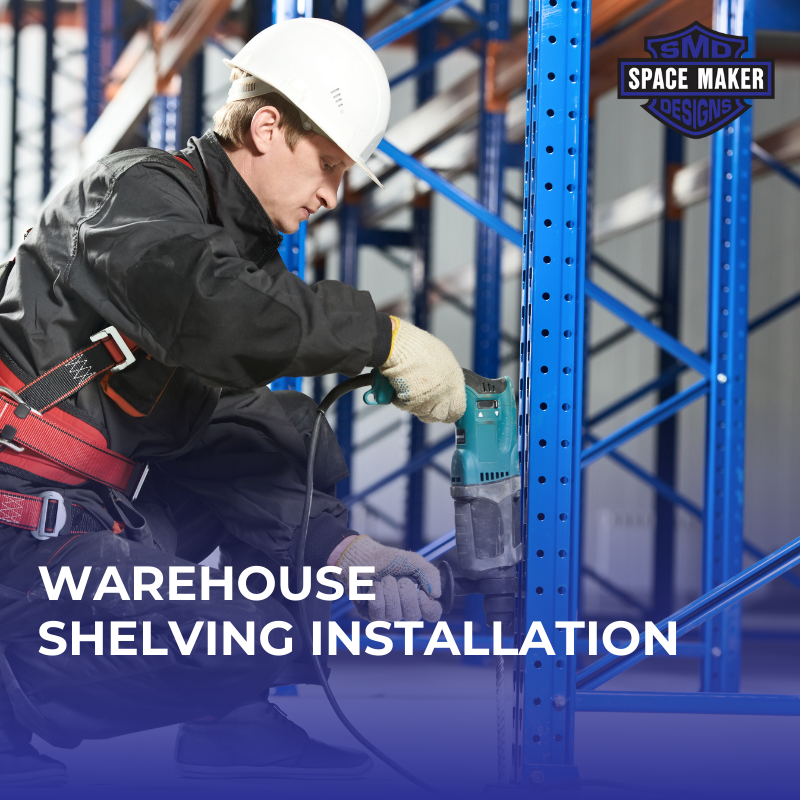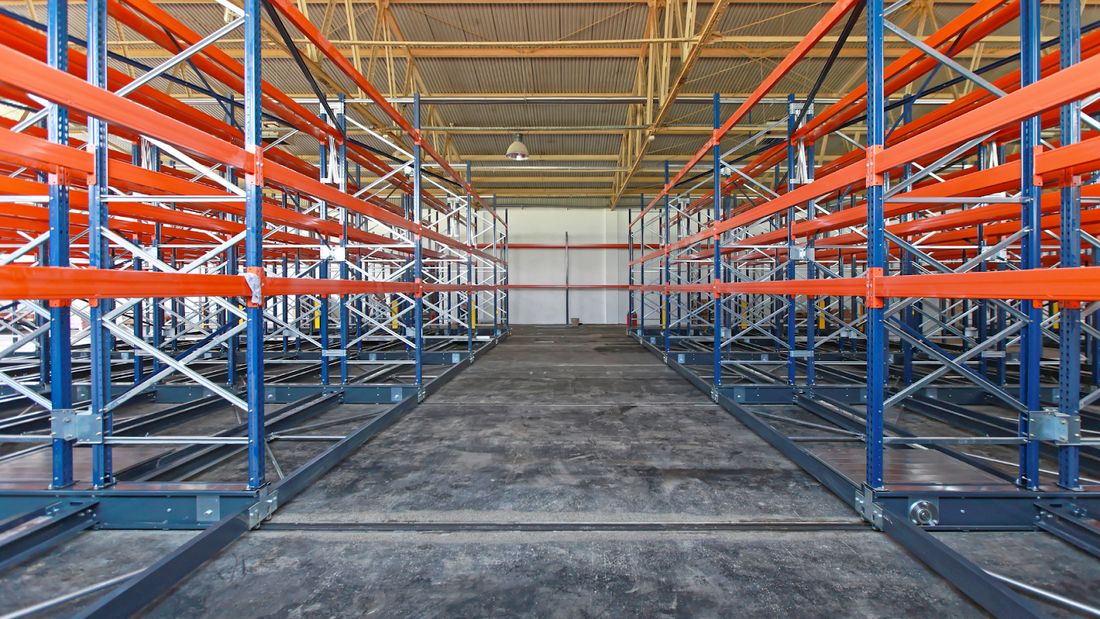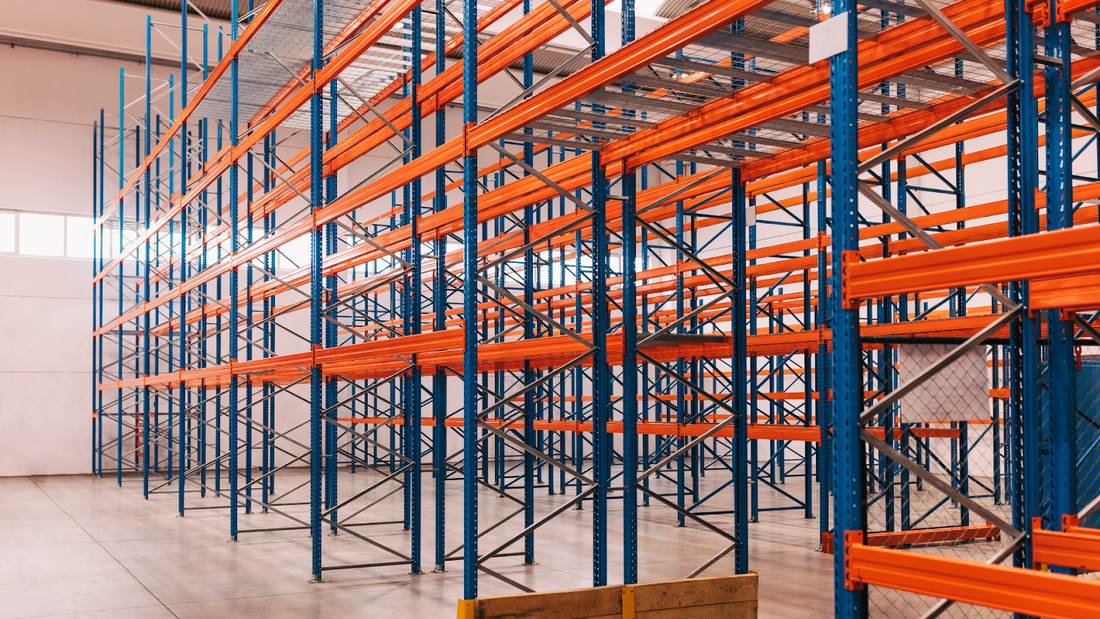When it comes to optimizing warehouse operations, the significance of proper shelving installation cannot be overstated. It's the backbone of an organized, efficient, and safe storage environment. The right shelving setup not only enhances the usage of space but also streamlines logistics, leading to smooth business operations and ultimately impacting the bottom line. This guide is tailored to address the entire process, from understanding the basics to completing a successful installation. We'll navigate through selecting the right system, understanding compliance with safety regulations, and managing the installation process. Adequate training for your team and ensuring the ongoing efficiency of your shelving system will also be covered. Whether you're setting up a new warehouse or looking to improve an existing one, this article is designed to equip you with essential insights for robust warehouse shelving installation.
Enhance your warehouse efficiency now! Access crucial insights for optimal warehouse shelving installation. Maximize space and streamline operations for peak business performance. Reach out to us today!
Enhance your warehouse efficiency now! Access crucial insights for optimal warehouse shelving installation. Maximize space and streamline operations for peak business performance. Reach out to us today!
Understanding The Basics Of Warehouse Shelving
Warehouse shelving is not a one-size-fits-all solution; it must be tailored to fit the specific needs of your operation. From robust pallet racks capable of holding heavy loads to modular shelving for varied merchandise, the options are diverse. It's crucial to consider factors such as weight capacity, accessibility, and space optimization when selecting a shelving system. Efficient shelving not only maximizes storage space but also improves item retrieval times and inventory management. An initial investment in the right shelving solution can yield long-term efficiencies and cost savings.
Benefits Of Professional Installation Services
Quality And Reliability
Engaging professional installation services elevates the quality and reliability of warehouse shelving installations. These seasoned experts possess the knowledge to recommend optimal shelving solutions, meticulously considering crucial factors such as floor space, ceiling height, and load requirements to tailor installations precisely to specific warehouse needs. Their extensive experience ensures secure installations that meet manufacturer specifications and adhere to industry best practices.
Minimized Risk And Improved Safety
Prioritizing safety within warehouse environments is non-negotiable. Professional installers undergo rigorous training to comply with safety standards and regulations, significantly reducing the risks associated with improper assembly or installation. Conducting comprehensive risk assessments is an integral part of their work, ensuring that shelving systems are not only stable but also configured to minimize potential hazards, fostering a safer working environment.
Efficiency And Time Savings
Opting for a professional installation team guarantees a swift and efficient shelving installation process completed within an optimal timeframe. This translates to reduced downtime in warehouse operations, expeditiously getting your storage facilities operational. Moreover, these experts' foresight allows them to anticipate and address potential issues promptly, mitigating future disruptions and ensuring seamless shelving functionality without delays. Choosing professional installation services not only ensures the job is done right the first time but also maximizes efficiency, minimizing interruptions to your warehouse operations.
Planning Your Shelving Installation
Space Assessment And Design Layout
A meticulous evaluation of available warehouse space forms the cornerstone of an effective shelving installation process. This assessment involves a comprehensive analysis considering various factors such as traffic flow, accessibility for both staff and equipment and the optimization of picking and stocking efficiency. Crafting a detailed design layout, possibly augmented by software simulations, becomes instrumental in identifying and implementing the most suitable configurations tailored to your space and operational needs.
Inventory Management And Load Planning
Harmonizing inventory specifics with shelving specifications stands as a pivotal aspect of establishing an efficient storage system. During the planning phase for shelving installation, it's crucial to factor in the size, weight, and variability of the products being stored. Load planning entails meticulous calculations to ascertain proper weight distribution, ensuring that the shelving units can reliably accommodate the required capacity without any compromise in functionality or safety.
Coordination And Project Management
The success of a shelving installation endeavor hinges upon meticulous coordination and efficient project management. This multifaceted process encompasses creating a detailed timeline, allocating necessary resources, and fostering effective communication among all stakeholders involved. From procuring the requisite shelving units to orchestrating the logistics of the installation day, adept coordination ensures a seamless and well-timed execution, facilitating a hassle-free and timely completion of the project. Efficient project management is key to ensuring all elements align cohesively, leading to a successful and satisfactory shelving installation process tailored to your specific warehouse requirements.
Safety Regulations And Compliance
Understanding OSHA Guidelines
Adherence to the standards set by the Occupational Safety and Health Administration (OSHA) is an indispensable aspect of warehouse operations. OSHA guidelines serve as the benchmark for implementing protective measures to prevent workplace injuries. Warehouse shelving installations must align with OSHA's standards, especially concerning load handling, distribution, and aisle spacing, ensuring a safe working environment for all personnel.
Local Codes And Building Regulations
Apart from federal regulations like OSHA, compliance with local building codes and regulations is equally imperative. Local regulations might encompass seismic considerations, fire safety codes, or weight restrictions on floors, among other specifics. Seeking professional guidance to navigate and understand these multifaceted requirements proves to be the most efficient pathway toward compliance, ensuring that your warehouse operations meet both federal and local standards.
Regular Inspections And Documentation
Merely installing shelving systems isn't the final step; continuous compliance is essential. Regular inspections are a necessity to ensure ongoing adherence to safety standards. Documentation of these inspections, any incidents that occur, and subsequent repair work is crucial. This documentation serves as a vital record for insurance purposes and regulatory reviews, underscoring the importance of a meticulous approach toward maintaining safety standards and compliance within warehouse facilities. Regular inspections and thorough documentation are key components in upholding safety measures and ensuring continuous compliance with regulatory standards, safeguarding both personnel and the warehouse facility itself.
The Installation Process
Preparation Of The Warehouse Area
The commencement of the installation process necessitates meticulous preparation of the warehouse space. This entails clearing the designated area where the shelving will be positioned, conducting a comprehensive cleaning to ensure an optimal environment, and verifying the floor's capability to bear the weight of both the shelving units and stored items. Additionally, it involves gathering all essential tools and equipment while briefing the installation team on the planned strategy for implementation.
Prepare for efficient shelving installation! Clear, clean, and fortify your space. Equip your team and tools for success. Start optimizing your storage now!
Prepare for efficient shelving installation! Clear, clean, and fortify your space. Equip your team and tools for success. Start optimizing your storage now!
Gathering Tools And Equipment
Equipping the installation team with the necessary tools and equipment is pivotal for a successful installation process. This inventory may encompass various items such as lifting equipment, power drills, levels, and essential safety gear. Ensuring that all tools are in prime working condition and easily accessible play a critical role in facilitating a seamless and efficient installation process.
Step-By-Step Installation Guide
Adherence to a comprehensive step-by-step guide is integral to the installation process. The installation team meticulously follows this guide, methodically assembling and securing the shelving units in strict accordance with the manufacturer's specifications. Employing precise techniques for anchoring and assembly holds paramount importance in guaranteeing the stability and functionality of the shelving system. A systematic approach minimizes the likelihood of errors or the necessity for revisions, thus averting potential additional costs and delays during the installation phase. The disciplined adherence to an established guide ensures a smooth and efficient installation process, resulting in a sturdy and reliable shelving system within the warehouse space.
Training And Handling Procedures
Educating Your Team On Safe Practices
Following the completion of installation, prioritizing training for your workforce on the safe utilization and handling of the newly installed shelving units is paramount. This training should encompass a comprehensive understanding of loading techniques, proper weight distribution practices, and protocols for emergency situations. Equipping employees with this essential knowledge not only ensures the longevity of the shelving system but also fosters a safer working environment.
Maintenance And Inspection Best Practices
Consistent maintenance and regular inspections play a pivotal role in upholding the resilience of your warehouse shelving. Establishing a structured schedule that incorporates routine checks and maintenance tasks is instrumental in identifying and addressing minor issues before they escalate into significant problems. Educating your team on recognizing signs of wear or damage empowers them to detect potential issues early, facilitating timely corrections to maintain the shelving system's functionality and safety standards.
Developing Efficient Workflow Strategies
Maximizing the benefits of your newly installed shelving system involves developing streamlined workflow strategies post-installation. This might entail optimizing inventory arrangements to create efficient picking paths or leveraging warehouse management systems (WMS) to monitor and manage stock levels and locations effectively. Implementing these strategies enhances operational efficiency, maximizes the utilization of the shelving system, and contributes to overall productivity within the warehouse environment. Developing and implementing efficient workflow strategies post-installation ensures the full potential of the shelving system is realized, optimizing warehouse operations and facilitating smoother, more productive processes.
Maximizing Efficiency
Organizational Tools And Techniques
Beyond the physical installation of shelving, the integration of organizational tools and techniques plays a pivotal role in enhancing warehouse efficiency. Utilizing tools like labels, barcode scanners, and inventory bins can elevate an already efficient shelving system to a superior level. These tools enhance visibility and accessibility, streamlining the process of locating and managing stored items effectively.
Leveraging Technology For Warehouse Management
Embracing cutting-edge technology, such as Warehouse Management Systems (WMS) and specialized inventory tracking software, offers significant benefits in optimizing warehouse operations. These advanced systems streamline stock control, enhance space utilization, and provide valuable data analytics. With these tools, continuous process improvements become feasible as data-driven insights enable refinements in various warehouse processes.
Review And Continuous Improvement
Regular review and assessment of the shelving setup pave the way for continuous improvement. Analyzing workflow patterns, evaluating changes in storage needs, and identifying indications of system wear and tear provide valuable insights. These evaluations help pinpoint areas requiring adjustments or upgrades, ensuring that the warehouse system maintains peak efficiency consistently. This ongoing assessment and improvement process is integral in adapting to evolving requirements and ensuring that the warehouse system remains optimized for efficiency and productivity.
Avoiding Common Pitfalls
Inadequate Planning And Rushed Decisions
One of the most prevalent pitfalls in shelving installation involves the temptation to rush decisions and bypass meticulous planning in favor of quick installation. However, such haste often leads to suboptimal space utilization and potential safety hazards. Taking the necessary time to thoroughly plan and consider all variables is pivotal for a successful installation process, ensuring optimal functionality and safety of the shelving system.
Overlooking Load Capacity And Distribution
Neglecting to consider load capacities and distribution can pose significant risks to both personnel and stored merchandise within a warehouse. Understanding the maximum weight that shelving units can safely support and ensuring even distribution of loads are fundamental safety measures. This proactive approach helps prevent structural failures and ensures that the shelving system operates within its designated capacities, mitigating potential safety hazards.
Neglecting Regular Maintenance
A commonly overlooked aspect post-installation is the consistent oversight of regular maintenance, which is crucial for the sustained performance of shelving systems. Establishing and adhering to a robust maintenance schedule is imperative to prolong the lifespan of shelving units and maintain their ongoing performance and safety standards. Regular maintenance acts as a preventive measure, preventing potential issues from escalating and preserving the integrity of the shelving infrastructure over time. Prioritizing regular maintenance ensures continued functionality and safety, contributing to the longevity of the shelving system.
When To Update Or Upgrade Your Shelving?
Assessing Shelf Life And Performance
Regular and systematic evaluations of the shelf life and performance of shelving systems are essential for maintaining an efficient warehouse setup. By consistently assessing these aspects, businesses gain insights into the longevity and effectiveness of their shelving infrastructure. Changes in inventory characteristics, such as variations in size, weight, or the introduction of new product lines, can significantly impact the efficacy of existing shelving solutions over time. These assessments provide a comprehensive understanding of how the shelving system adapts or may need modifications to accommodate evolving storage requirements. Through these evaluations, warehouse managers can proactively identify when updates or upgrades to the shelving systems are necessary. This proactive approach ensures optimal storage efficiency and safety within the warehouse environment, preventing potential disruptions due to inadequacies in shelving performance.
Retrofitting For Enhanced Functionality
When shelving systems show signs of wear and tear or fail to meet evolving operational needs, retrofitting emerges as a strategic solution to enhance functionality without necessitating a complete overhaul. This process involves a thoughtful reconfiguration or modification of existing shelving setups to align them better with the evolving storage demands. Retrofitting allows for the incorporation of supplementary components or adjustments that optimize space utilization, improve load-bearing capacity, or streamline inventory management. By strategically retrofitting shelving systems, businesses can extend the life of their infrastructure while effectively adapting to changing storage needs. This approach not only minimizes costs associated with complete replacements but also ensures that the shelving infrastructure remains aligned with the current operational requirements, enhancing warehouse efficiency and productivity.
Expansion Needs
Business growth often correlates with increased storage demands. Foreseeing future expansion is crucial in identifying the optimal timing for shelving updates or expansions. Scalability and flexibility should be key considerations when planning expansions, allowing the shelving infrastructure to adapt and grow alongside the evolving needs of the business. Implementing scalable solutions ensures that the shelving system remains aligned with the business's growth trajectory, minimizing the need for frequent replacements or extensive alterations. This forward-thinking approach facilitates a seamless transition during periods of expansion, supporting the warehouse's ability to accommodate growing inventory demands effectively.
Final Thoughts On Warehouse Shelving Installation
A well-executed shelving installation can propel warehouse efficiency and operational success. Remember that proper planning, adhering to safety standards, and opting for professional installation services can save you from costly mistakes. Continuous training, maintenance, and adaptability to change will ensure that your storage solutions scale with your business needs. If you're ready to enhance your warehouse operations, leveraging Space Maker Designs' expertise could offer the robust, efficient, and innovative solutions you're looking for. Let us help guide your installation from planning to completion with precision and care.
Boost your warehouse efficiency with expert shelving installation! From planning to execution, trust Space Maker Designs for precision and innovation. Elevate your storage solutions today!
Boost your warehouse efficiency with expert shelving installation! From planning to execution, trust Space Maker Designs for precision and innovation. Elevate your storage solutions today!
Frequently Asked Questions About Warehouse Shelving Installation
How long does it take to install warehouse shelving?
The installation duration varies based on the size, complexity, and type of shelving. It can range from a few hours for small setups to several days for larger warehouse installations.
What factors should be considered before installing warehouse shelving?
Factors to consider include warehouse layout, space availability, types of items to be stored, weight requirements, accessibility, future expansion needs, and compliance with safety regulations.
Are there safety regulations or guidelines for warehouse shelving installation?
Yes, safety guidelines often include proper anchoring, weight distribution, load capacities, securing shelves, and ensuring stability to prevent accidents. Compliance with OSHA regulations is essential.
Can warehouse shelving systems be customized or adjusted after installation?
Many shelving systems offer modularity and adjustability, allowing customization even after installation to accommodate changing storage needs.
What are the common mistakes to avoid during warehouse shelving installation?
Common mistakes include overloading shelves, improper anchoring, ignoring weight limits, incorrect assembly, disregarding safety guidelines, and inadequate planning.
Are there any tips for maximizing space during warehouse shelving installation?
Tips include utilizing vertical space, planning efficient aisle widths, grouping similar items together, using adjustable shelving, and implementing efficient organization methods.
Do warehouse shelving installation services include maintenance or repairs?
Some installation services may offer maintenance or repair contracts, while others might require separate arrangements. It depends on the service provider.
What are the differences between DIY and professional warehouse shelving installation?
DIY installations are more cost-effective but might lack precision and expertise. Professional installations ensure proper setup, and compliance with safety standards, and often include warranties or guarantees.
Where can I find reliable professionals or companies for warehouse shelving installation?
Reliable professionals or companies can be found through referrals, online directories, industry associations, or by researching reviews and testimonials.
Are there specific considerations for installing shelving in different types of warehouses (e.g., cold storage, retail, industrial)?
Yes, considerations vary based on warehouse type; for example, cold storage might require shelves resistant to moisture, while retail might prioritize aesthetics and visibility. Industrial warehouses might focus on heavy-duty shelving for larger loads.



